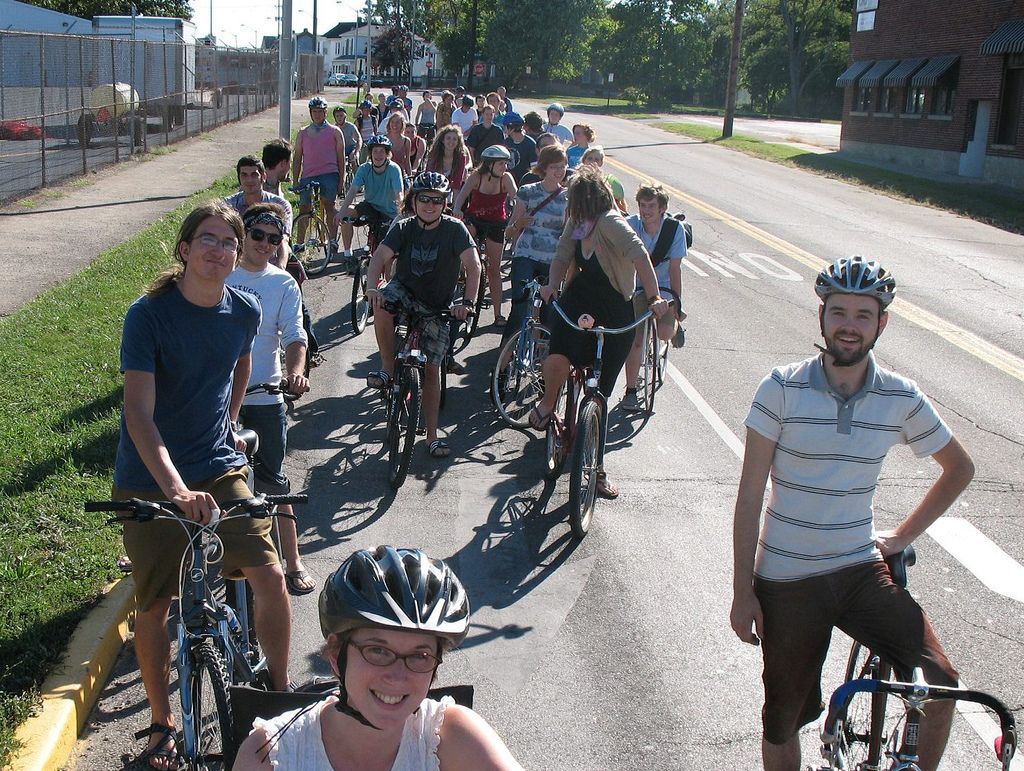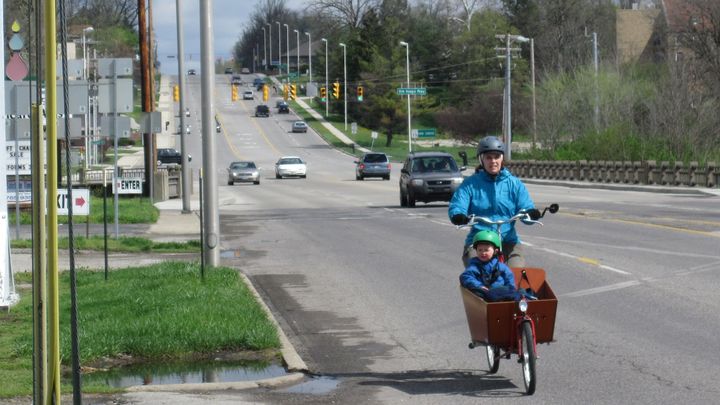Richmond, Indiana: Completing U.S. 27 piece of bike route network is essential

This message is a public comment on INDOT’s proposed renovations of U.S. 27 as it it passes through Richmond, a project budgeted at $21 million.
I support the City of Richmond’s response on DES#0100701 and offer the following in support of it.
What’s wrong with the current proposal
- The current proposal would speed up traffic at North C Street as it enters downtown, without any consideration of the negative effects and reduced safety that higher traffic speeds have on pedestrians and cyclists.
- Against current federal transportation policy, it makes no accommodations for bicycling.
How a Complete Streets plan would help

Aaron has been commuting from downtown to the North Side for the fitness benefits and financial savings, but remarks about the poor suitability of the short stretch that has to use U.S. 27.
- A Complete Streets approach would better balance the needs of motorists with pedestrians with cyclists.
- The project could complete a critical connection in our bike route network. We are now in Cary, Illinois’ situation where the only available bridge over the Fox River was designed exclusively for cars. Only after Nick Oglesby died cycling across it did the state apply an expensive retrofit to the bridge. We have an opportunity to correct this before our own 27 bridge is also host to tragic accident. Only a short alternative connection between Freeman Park and Oak Drive would be required, and the two land owners involved support the connection.
Why a change is justified

Becky enjoys commuting to work by bike, but does not attempt making the missing bike network connection on U.S. 27. Without a safe connection the north side, some trips don’t happen by bike that otherwise could.
- A responsible plan should anticipate the needs and best practices through the twenty-plus year lifespan of the road. Current federal policy already prescribes an integrated approach, and pending Complete Streets legislation at the federal and state level will require it.
- A revised plan would be within budget. A new plan would focus on shifting priorities, not necessarily expanding the scope of work. For example, if a complete streets design were to recommend bike lanes along some section, the road would need to be re-striped as part of being repaved anyway.
- A complete streets approach is strategic. I can’t say it better than the federal government: “…Because of the numerous individual and community benefits that walking and bicycling provide — including health, safety, environmental, transportation, and quality of life…”

Click to see photos of the proposed connector
- There were alternatives built into the original plan. INDOT’s environmental document showed that while one plan was presented, five were considered, including one called “Minimization”… an alternative which was considered “feasible”. This indicates that it is feasible to defer some aspects of the presented plan if that is necessary to add new elements to create a more balanced approach.
- Complete Streets expertise is out there. INDOT contracted with Clark Dietz for the engineering on this project. They can just as easily contract with engineers expert in Complete Streets principles for a revision. Advocates at the state or national level could provide assistance on finding appropriate expertise if necessary.
Finally, I question whether INDOT’s Public Involvement Procedures for this project have lived up to their own public standards.
The policy found online says: The policy prescribes a “proactive public involvement process” and “maintaining a list of stakeholders in the transportation system including public agencies, representatives of transportation agency employees, private providers or transportation, organizations representing the traditionally underserved and other interested parties and segments of the community affected by transportation plans, programs, and projects.”
I think checking for the existence of a local bike advocacy group would be a reasonable and logical step to be proactive about public involvement for a road project. The existence of Bike Richmond would quite easily be discovered by searching the web for “bicycle richmond indiana” or simply asking the City or Bicycle Indiana if such a groups exist.
INDOT checked in with groups and organizations about air quality, water quality, wildlife, hazardous materials, historic homes and social justice, but failed to seek out and provide early notification to a group with an obvious interest in transportation. If INDOT been reasonably proactive, feedback about Complete Streets could have been received and incorporated sooner, and a design revision would not have been required.



Comments ()